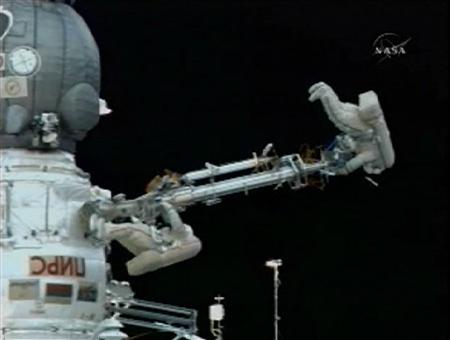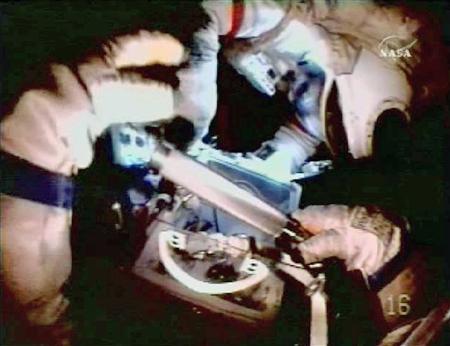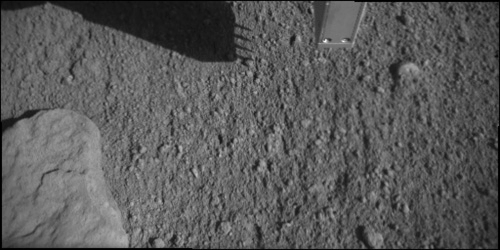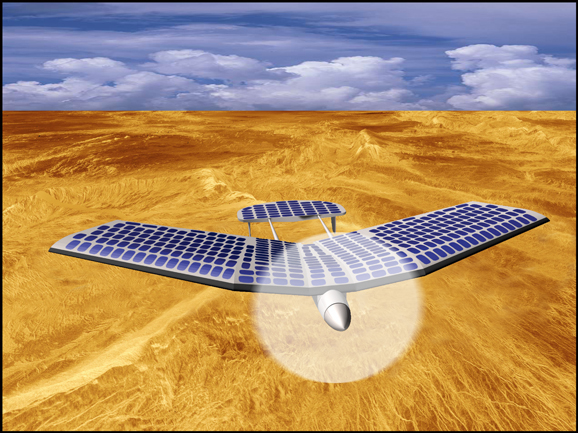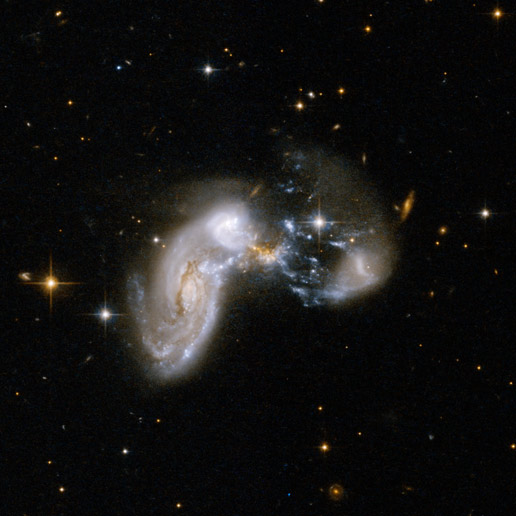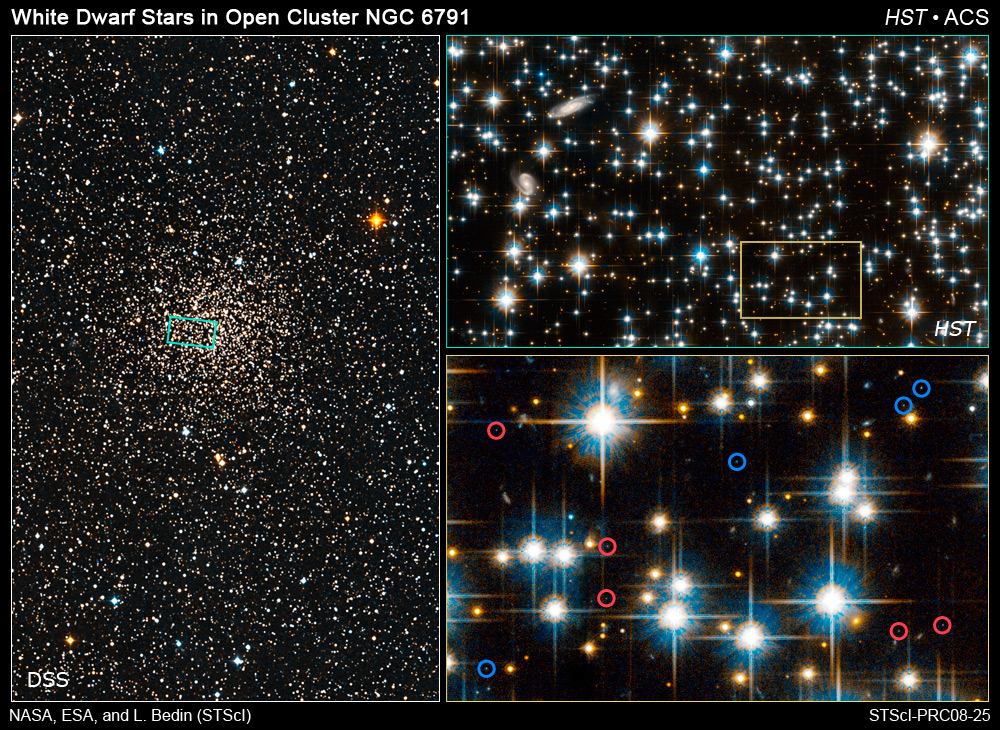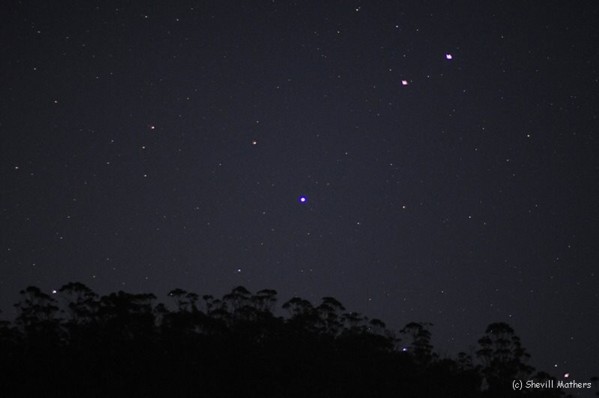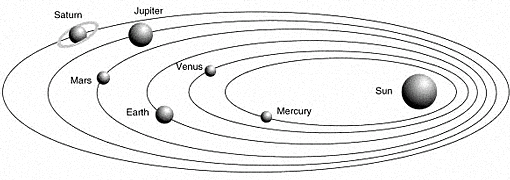With all the orbital missions at the various planets in our solar system, scientists have been able to glean an amazing amount of data to help us understand our neighboring worlds. But imagine a mission that could fly lower than orbital altitudes — actually flying in the atmosphere of another planet and closer to the surface — and imagine how much more detailed the data could be. This type of mission would be especially helpful on Venus, where the intense heat and crushing air pressure at the surface basically precludes the success of any type of lander mission. So, last year, when NASA formed a Science and Technology Definition Team (STDT) to study the concept of a flagship mission to Venus, waiting in the wings was Dr. Geoffrey Landis. For the past several years Landis and a group of scientists and engineers from NASA’s Glenn Research Center have been studying the concept of a solar-powered airplane at Venus. Landis says a small aircraft powered by solar energy could fly continuously in Venus’ atmosphere, and would be an ideal vehicle for gathering data on both the planet’s atmosphere and surface, with the ability to maneuver almost anywhere.
“There’s a lot of interest in Venus at the moment,” said Landis. “We’ve been looking at Mars quite a bit lately, and in some ways Mars is Earth’s twin, but in even more ways, Venus is Earth’s twin. So we learn a lot about Earth by studying Venus.”
A solar powered airplane has been a long-time interest for Landis. “I spent a lot of time in college building model airplanes, so the idea of flying an airplane on Venus sounded very interesting to me,” he said.
Since 2000, Landis and his team have been studying this concept, and Landis recently presented their findings to NASA’s STDT for Venus. “I’ve been trying to drum up enthusiasm for the things we’ve done,” he said. The main work the group has done so far has been focusing on the airplane itself, verifying that the concept is actually going to work.
“We’ve done a thorough design study to determine if there are any showstoppers,” said Landis. “We don’t think there are. We think it’s a very doable project.”

The airplane would have to fold up to fit inside a small aeroshell for a “Discovery” class scientific mission. After arriving at Venus the craft would deploy from the aeroshell, unfold and begin gliding through the atmosphere. With solar cells covering the entire surface, the airplane would fly strictly on solar power, not needing fuel. The team has come up with a foldable design that has a wingspan of 9 meters and a length of just under 7 meters.
Surprisingly, the density of Venus’ atmosphere shouldn’t be a problem for a solar airplane mission. “At the altitudes we’ll be flying, it would be like flying at moderate altitudes on Earth,” said Landis. “Venus is actually a very easy planet to fly on. Interestingly, the problem on Venus is the wind. It turns out it’s a very windy planet, and we would like to be able to keep our solar airplane flying underneath the sun, so we have to fly faster than the wind so we can stay in the sunlight. If we can do that we can basically fly forever.”
The craft would have to be capable of sustained flight at or above the wind speed, about 95 m/sec at the cloud-top level, 65 to 75 km above the surface. For exploration at lower altitudes, the aircraft could glide down for periods of several hours and then climb back to higher altitudes, allowing the cloud layers to be probed. But the airplane would have to be in sunlight for a majority of the time. The team’s analysis of a flight using battery storage shows that it wouldn’t work to keep the aircraft aloft on battery power during the passage across the night side of the planet.
As far as the science that can be gleaned from a solar-powered airplane at Venus, Landis’ team has primarily envisioned a mission to study Venus’ atmosphere. However, they’ve also looked at using it for a radar mission, and in particular if two airplanes could be used, one could be a transmitter and the other a receiver to do what’s called “bistatic radar” where you vary the angle between the transmission and the receiver to provide additional information about the planet. But mainly, an airplane flies much closer to the surface than an orbiting spacecraft, to gather greater detailed information about the planet.
The current focus of Landis’ team has been deciding what type of science could be done, and how it could best be achieved. “What we’ve been doing lately is just studying Venus and asking ourselves, what do we want to do,” said Landis. “Is an airplane the right thing? We’ve also been looking at airships. You can make a zeppelin fly at the planet Venus, which has both advantages and disadvantages over an airplane, so we’re asking ourselves, at what altitude in the clouds do we want to fly — above, below, or in the clouds — and what science we can do? The very hard part on Venus is flying low. It’s very easy to fly high, but the lower you could fly, the better the science you could accomplish. But flying low will be tricky.”
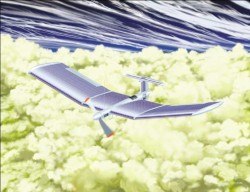
Interestingly enough, last year, students from Boston University also conducted a design study of a solar airplane at Venus, and they looked at the design that Landis’ team had come up with. The BU students also concluded such as mission was quite feasible. “They looked at the basic airplane design: Can you actually fly on Venus? We looked at things like, could you fold it up into the aeroshell, and how would it be deployed, etc.,” Landis said. “We found this second study to be a very useful sanity check for us, that an independent group of people looked at our ideas, and said that no, this isn’t out of the question.”
So, when could a solar-powered airplane mission be ready to fly over Venus? “It depends on how hard the mission you want to do is,” said Landis. “If you’re doing a simple solar airplane mission, we’ve shown that there aren’t any technology showstoppers in the airplane itself, so I think it’s something we could do in the near term, by the next decade. But the more difficult the mission you’re interested in, say if you’re interested in flying low or in the polar regions, places where it’s harder to fly, we’d have to back off and think about what the correct type of vehicle would be.”
This paper discusses more information about the Venus Solar Powered Airplane
